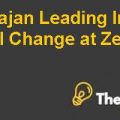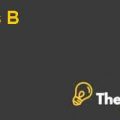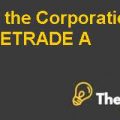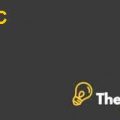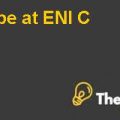
BCE INC.: In Play Case Solution
Question 1
From the perspective of BCE, how might the strategic oversight committee weigh the prospect of an all-cash bid from a private equity bidder against a potential stock and cash bid from Telus?
There are a number of factors which could be considered by the strategic oversight committee in weighing that whether an all-cash bid from a private equity bidder or a potential stock and cash bid from a strategic buyer such as Telus would be more beneficial from the perspective of BCE. First of all, the benefits of synergy should be considered by the strategic oversight committee in valuing both the bidders offer. The synergy benefits increase the efficiency and the competitiveness of a company.
It has been stated that if BCE merges with Telus Corporation, then the combined entity would be able to generate around $ 700 million to $ 1 billion in synergies. Since, both the business are in the wire line and wireless business therefore, the combination of their business operations would yield such synergies and thus Telus Corporation can outbid most of its rivals through its cash and stock bid. However, this would not be the case with the private equity bidder since they did not specialized in this business however, they would also focus on a business model which would emphasize on cost cutting programs and sale of the non-core businesses of the company.
Along with this, the private equity buyers would also be able to reduce the purchase price of BCE through the sale of the non-core investments of BCE and thus reduce the overall equity and debt financing required to fund the transaction. If the company combines with Telus Corporation, then it might yield significant synergies due to scale or cost advantages but Telus might be limited in expanding the capital spending program of the combined company.
However, if the company is privatized then the leadership team can easily monetize such improvements and enhance the profitability of the company. Another advantage of privatization is the lower cost of capital as the transaction would be financed with borrowed money. Therefore, strategic oversight committee will have to consider not only the synergies, but also other factors such as the benefits of relative financing mix of the private bidders and the strategic buyers, the extent of future capital spending, the relative cost of capital, regulatory hurdles and the premium offered to the current shareholders of BCE.
Question 2
What price might the committee feel was adequate given BCE's historical and recent share price performance?
The price for BCE has been estimated through a range of different valuation methods. First of all, the valuation of the equity of BCE has been performed on the basis of the discounted cash flow method. The free cash flow projects and the key input assumptions as provided in the case and case exhibits have been used to determine the equity value of BCE. The weighted average cost of capital has been estimated to be 7.73% based on the provided inputs. The conservative terminal growth rate is 1%. After deducting the total long term debt of BCE of $ 9.665 billion from the enterprise value of $ 39.64 billion we have an equity value of $ 29.98 billion and a price per share of $ 37.13 per share. Comparing this intrinsic value with the current share price of BCE of $ 31.13 per share, the shareholders of BCE would get a premium of 23.22%. The IRR for the future cash flows would be 17.09% based on the current market capitalization of $ 24.3 billion.....................
This is just a sample partial case solution. Please place the order on the website to order your own originally done case solution.


